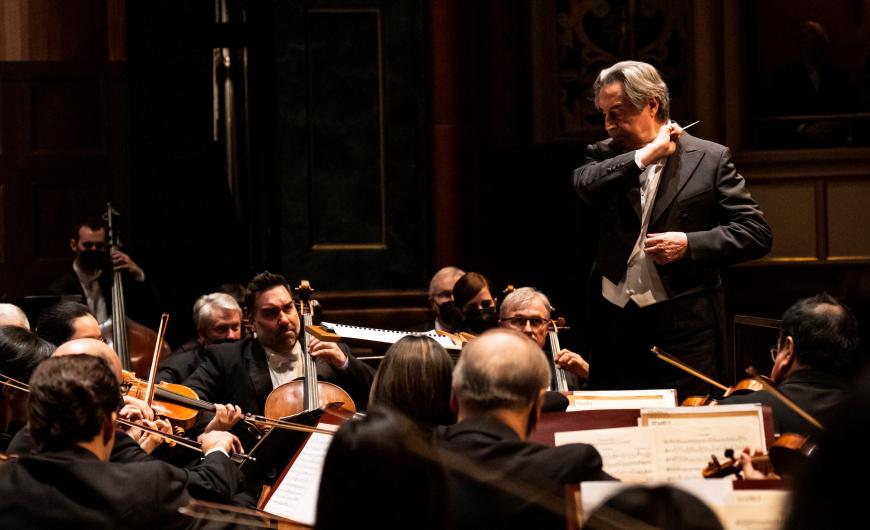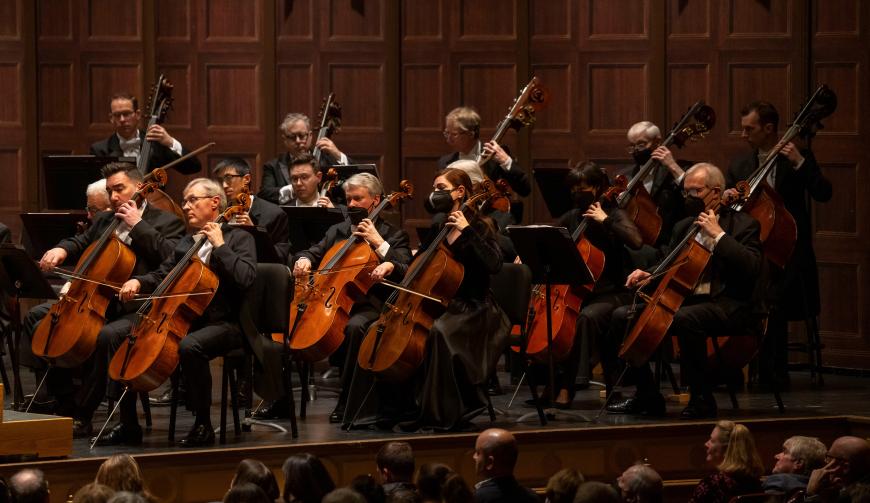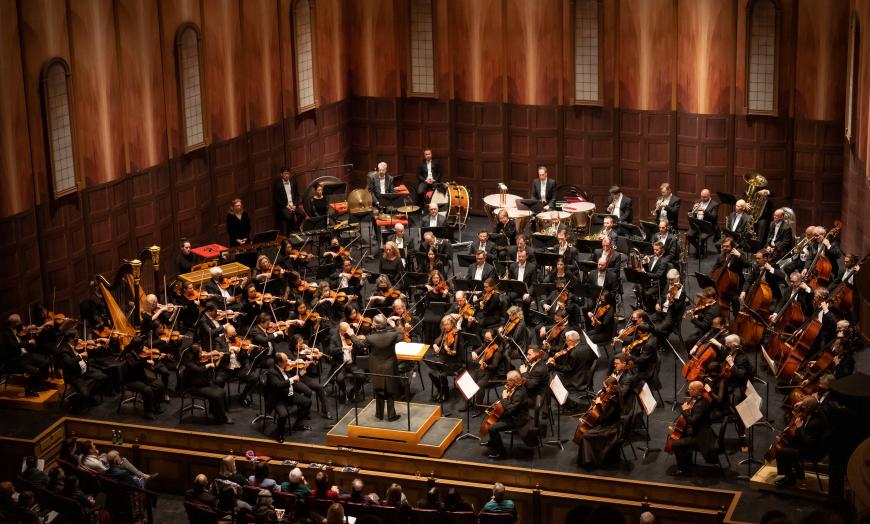
After being kept out of touring circulation because of pandemic restrictions, the mighty Chicago Symphony has hit the road again, including a brief West Coast tour that brought the orchestra back to The Granada Theatre in Santa Barbara. The CSO last played on this stage in 2017, presented then, as now, by Community Arts Music Association. (The musicians were hosted the day before by the Philharmonic Society of Orange County and would be at Stanford Live the next night.)
On the evidence of an impeccable Jan. 25 performance, in a concert spotlighting Beethoven’s Eighth Symphony and Modest Mussorgsky/Maurice Ravel’s Pictures at an Exhibition, the CSO still plays as if its life and art form depended on it. Then again, brilliance and attention to detail is routine business for this great ensemble.
Lending added poignancy to the evening, and this season, is the matter of the maestro. Riccardo Muti, an eminent and energizing presence on the podium, is ending his 13-year run as music director in Chicago, and this tour amounted to his swan song out west with the orchestra. Now 81, Muti seemed to lack no intensity or subtlety at the helm, moving lithely and presiding with a wise hand over — and with — the musicians. His legend becomes him.

While not including anything contemporary or even penned in the last century, the program was fortified by its own logic and integrity. Beethoven’s Coriolan Overture proved a blast of celebratory sophistication, snugly executed and imbued with narrative suggestions related to the character development in Heinrich von Collin’s play.
Muti and company brought commanding presence to Beethoven’s Symphony No. 8 in F Major, which clearly needs more love and stage time, being a misunderstood and underappreciated opus in the composer’s symphonic output. Muti stated a strong case for the subtle power of the underdog symphony with its deceptive lightness of being and reversion to the Haydn-esque quality of Beethoven’s earlier writing. Balances, nuanced dynamics, and taut yet luxuriant strings stood out among the symphony’s richly sonorous terrain and loveable quirks, right through to the witty left-footed dance of accents in the finale.
After intermission, from a lesser-known corner of the orchestral repertory, came Russian composer Anatoly Lyadov’s impressionistic 1909 work The Enchanted Lake. Muti and the CSO allowed the piece’s dreamy lyricism to embody the imagery of its title. And the colorful character of Lyadov’s tone poem made it an ideal segue to Ravel’s tour de force of orchestration, his 1922 setting of Mussorgsky’s Pictures. With its mosaic-like orchestral colors and dynamic extremes, the score is a wild ride for listeners and a test of any ensemble’s mettle.

Over the course of 10 movements (inspired by paintings by the otherwise obscure artist Viktor Hartmann), the orchestra vigorously and seamlessly navigated the work’s radically shifting moods and mutations. The tidy majesty of the recurring Promenade theme intersperses with all manner of expressions. Sweet playfulness in the “Ballet of the Chicks in Their Shells” sharply abuts the stern stuff of the sixth vignette and the implosive brassiness of the eighth. Resolving in its final movement, Pictures is still a prime example of discrete parts comprising a complex whole, with sometimes jagged juxtapositions along the way. The CSO met the demands and raised the ante; the commanding Santa Barbara performance was perhaps the boldest I’ve ever heard live.
For an encore, Muti’s fabled life as an opera conductor briefly emerged as he steered the orchestra into the Italianate Romanticism of the Intermezzo from Umberto Giordano’s Fedora.
It can be tempting to buy into the lofty reputation of an organization like the CSO, one of the upper-echelon symphonic units in this country and the world, and lose sight of objectivity. But this concert contained nary a missed or misplaced note. The CSO remains a model of what an orchestra should sound like and stand for.


